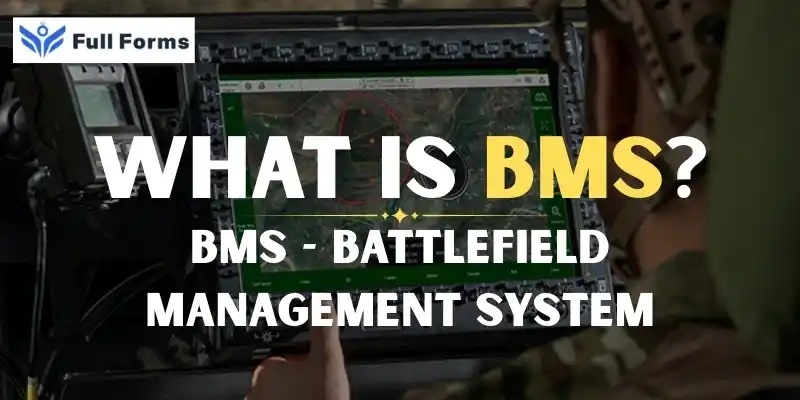Battlefield Management System
(BMS)

Description
Guns, soldiers, and tanks are not all there is to war. Much of it has to do with technology and information in order for a battle to be won. The information that a modern army needs must be fast, accurate, and up-to-date. Here comes the Battlefield Management System (BMS).
A battlefield management system is as the mind of a contemporary battlefield. It keeps soldiers, commanders, and decision-makers connected, informed, and prepared. It’s a smart system that places all your information, communication, and control in one place.
BMS is essentially an advanced computer-based commanding and controlling system employed by military forces.
It integrates infantry, tanks, artillery, and helicopters, among others, into a digital network through enhanced data-sharing capabilities in real time.
It tells everyone from the ordinary soldier on the ground to the top commander exactly what is happening at the battlefield. It tells them:
- Where the enemy is
- What steps are being taken? What kind of help do you need? This helps you make smart and quick choices in the battle.
What Makes BMS Important?
Being aware in real time
Every second matters in war. BMS lets troops see what's going on around them in real time, which cuts down on mistakes and confusion.
Faster Ways to Talk
Communication between units is effective even in harsh conditions. Orders are given and obeyed instantly.
Better cooperation
When information is shared between the different branches of the armed forces, they can cooperate smoothly.
Planning and Tracking Missions
Maps and updates in real time allow commanders to plan missions better so that troop movements, levels of ammo, and enemy positions can be seen on one screen.
Better for Soldiers
Soldiers can stay out of troubled areas with the information and perform much better in time alerting and planning in advance.
Friends, enemies, and the terrain should all be presented with digital maps that should show real-time positions. GPS integration would help a lot in showing the exact location of units. Messages, videos, and pictures can all be conveyed instantly.
Information Combining
Information from cameras along with drones as well as radars
Battalion Command and Control
Allows commanding officers to command and monitor.procedure
Support to decision
Provide the end user with the best possible action to take, supporting it with real-time data available at hand.
How Does It Work?
A BMS is a system that integrates, in itself, required hardware, software, and communication devices together. These include:
- Soldiers’ tablets/handheld devices
- Terminals for tanks and transport when mounted on vehicles
- Officers’ computers at a command center site
They are all interlinked through radio, satellite, or the Internet. If a soldier observes enemy movement and feeds this information into the system, the adjacent units and commanders get to know about it. Hence, timely decisions and timely operations by you.
India’s BMS Program
Even India is not far behind in bestowing its army with a techno edge; it has been working on an indigenously developed Battlefield Management System.
Partnerships have been made with the Defence Research and Development Organisation (DRDO) and private sector industries.
Thus, providing soldiers with smart helmets, communication kits, and portable devices.
It will enhance the coordination of armies, air forces, and paramilitary groups.
Although the whole project has been marred by delays, it still forms a crucial segment of India’s future warfare strategy.
Problems in implementing BMS
A full BMS costs a fortune to build and to upkeep. Special tools and secure networks manned by trained people are required to keep it running.
Cyber Safety
One weakness of BMS is that since it is a digital system, it can be hacked, hence the need for safe data.
Training of Soldiers and Commanders to Use It
Soldiers and commanders require knowledge of how to operate the system appropriately. This is time consuming and expensive.
Terrain and Connectivity
There could be a lack of strong communication signals in distant battlefields.
Future Outlook
As technological advancement proceeds, so do BMS systems. Prospective characteristics may include:
- AI’s prediction of the subsequent point of destination for the enemy
- Augmented Reality (AR) to visualize battlefields
- Robots and drones to serve in BMS networks
- Communication through 5G connectivity for faster and more reliable links
Such enhancements will make armies that much more effective, vigilant, and lethal, with minimal risk to human life.
Final thoughts
The battlefield management system is a game-changer in making fighting smarter. It makes the battlefield faster, clearer, and easier to control. BMS is so crucial in saving lives as well as winning battles because it helps keep the soldiers and commander communicating and updated.
This is why the BMS is rightfully framed within the spectrum of ‘modern defense,’ as the latter harbors the understanding that wars are not won solely by might; rather, they are information strategies. It’s become more than an implement; it’s changed the face of how battles are fought and won.
